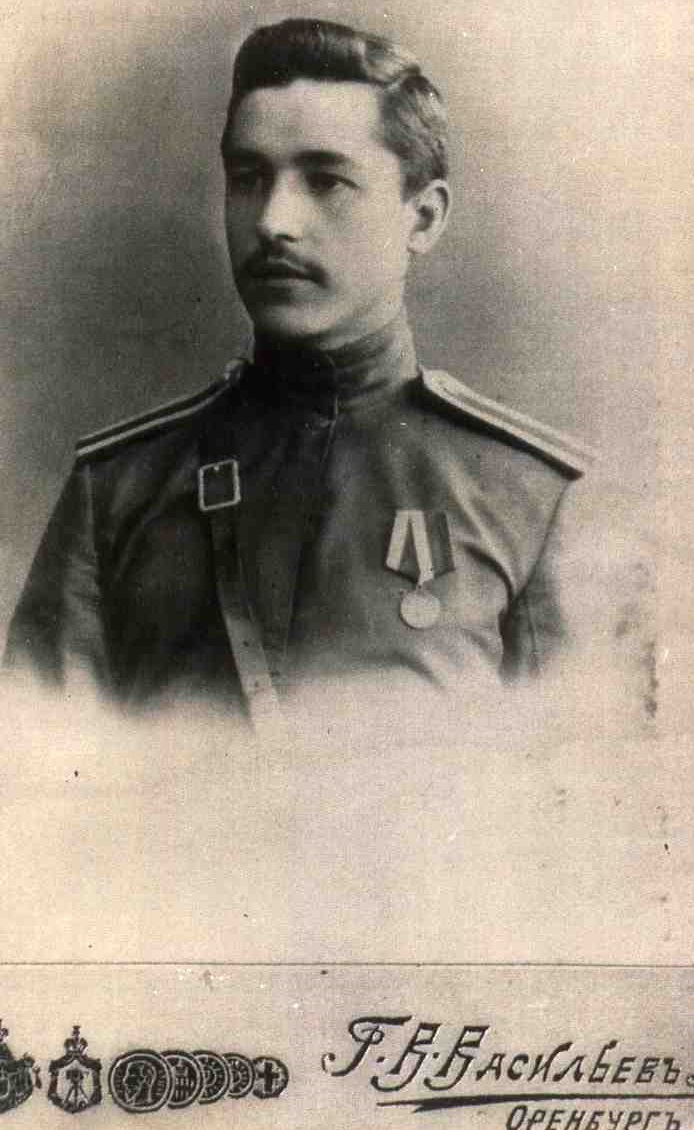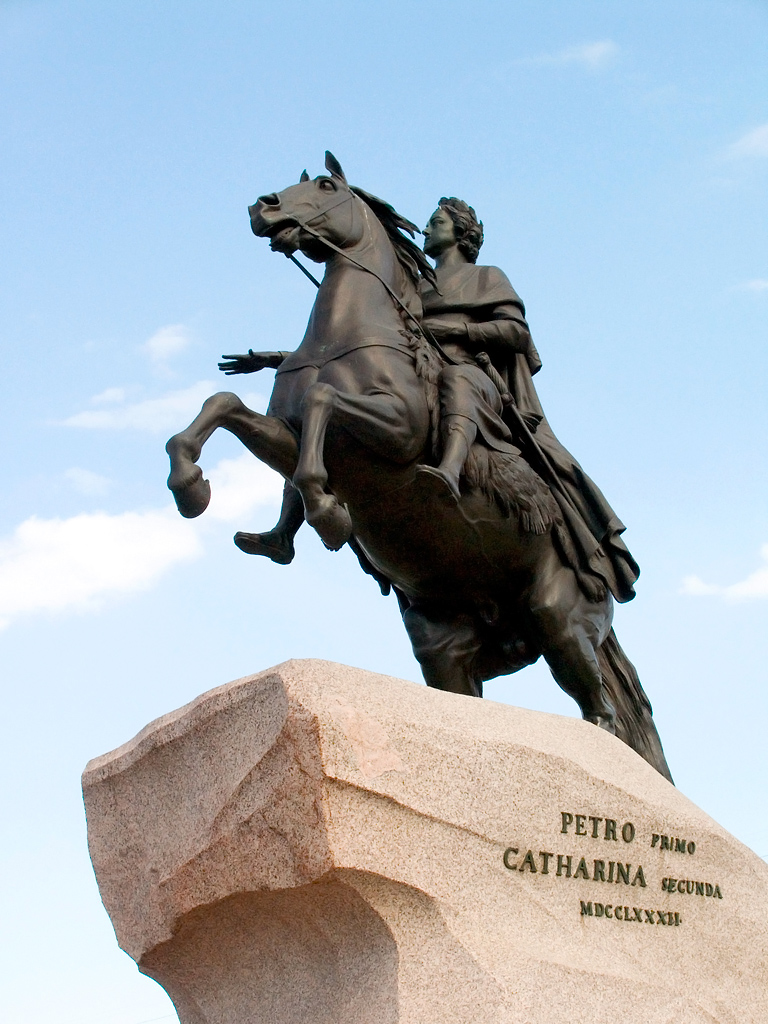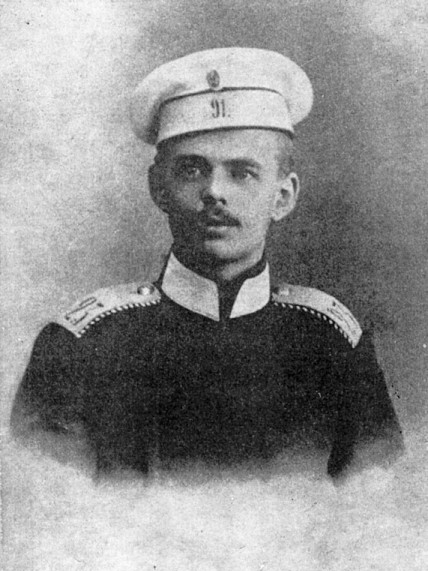|
Paul's Military School
The Paul's Military School or Pavel Military School () (also translated as Pavlovsk Military School, Pavlovsk Military College) was a Junker (Russia), military school in St. Petersburg, Russian Empire, Russia, established in 1863 on the basis of the Paul's Cadet Corps (Russia), Cadet Corps. It was closed in November 1917 after the October Revolution. It was named after emperor Paul I of Russia, Paul I. History of the school On August 25, 1863, during the reorganization of military educational institutions, the Paul's Cadet Corps was abolished, and its seniority was transferred to the Paul's Military School. The first appointed head of school was Pyotr Vannovsky. The school was given the building and archives of the First Cadet Corps. Over the 50 years of its existence, the school trained 7,730 officers, 52 graduates became Knights of the Order of St. George, 124 graduates died on the battlefields. By 1913, 1/4 of the available officers of the General Staff consisted of graduat ... [...More Info...] [...Related Items...] OR: [Wikipedia] [Google] [Baidu] |
Junker (Russia)
The term Junker ( (''yunker'')) had several meanings in Imperial Russia. The Russian substantive ''Yunker'' is derived from the German noun ''Junker'', where it means "young lord". *Yunker (ru: юнкер) was the rank for a volunteer at military service (ru: вольноопределяющийся, ''volnoopredelyayushchiycya'', de: One-year volunteer) in the Imperial Russian Army in 19th and 20th centuries. **Fanen-yunker/yunker (ru: фанен-юнкер/юнкер) was a military rank for junior officers of dvoryan descent since 1902. *Kamer-yunker (ru: камер-юнкер; cf. German ''Kammerjunker'') was a courtier title defined in the Table of Ranks, generally equating to ''valet de chambre'' or Groom of the Chamber. *Yunker was a term for students of any military or junker school in between 1864 and 1917. Junker schools Junker schools in Russia were introduced in 1864. They were usually located next to district headquarters in a given region. Junker schools pre ... [...More Info...] [...Related Items...] OR: [Wikipedia] [Google] [Baidu] |
Menshikov Palace (Saint Petersburg)
The Menshikov Palace () is a Petrine Baroque edifice in Saint Petersburg, situated on Universitetskaya Embankment of the Bolshaya Neva on Vasilyevsky Island.It is not to be confused with the Menshikov Palace in Oranienbaum, Russia, built by the same architects around the same time. ''Menshikov Palace'' can also refer to the Lefort Palace in Moscow. Since 1981, it has served as a public museum, a branch of the Hermitage Museum. The palace was founded in 1710 as a residence of Saint Petersburg Governor General Alexander Menshikov and built by Italian architects Giovanni Maria Fontana, and, later, German architect Gottfried Johann Schädel. It was opened in , but the construction continued until 1727 (assisted by Domenico Trezzini, Bartolomeo Rastrelli, Georg Johann Mattarnovy and Jean-Baptiste Le Blond), when Menshikov with his family was exiled to Siberia and his property was confiscated. In 1731, the First Cadet Corps were established and occupied the palace and neigh ... [...More Info...] [...Related Items...] OR: [Wikipedia] [Google] [Baidu] |
1917 Disestablishments In Russia
Events Below, the events of World War I have the "WWI" prefix. January * January 9 – WWI – Battle of Rafa: The last substantial Ottoman Army garrison on the Sinai Peninsula is captured by the Egyptian Expeditionary Force's Desert Column. * January 10 – Imperial Trans-Antarctic Expedition: Seven survivors of the Ross Sea party are rescued after being stranded for several months. * January 11 – Unknown saboteurs set off the Kingsland Explosion at Kingsland (modern-day Lyndhurst, New Jersey), one of the events leading to United States involvement in WWI. * January 16 – The Danish West Indies is sold to the United States for $25 million (equivalent to $ million in ). * January 22 – WWI: United States President Woodrow Wilson calls for "peace without victory" in Germany. * January 25 – WWI: British armed merchantman is sunk by mines off Lough Swilly (Ireland), with the loss of 354 of the 475 aboard. * January 26 – The ... [...More Info...] [...Related Items...] OR: [Wikipedia] [Google] [Baidu] |
Educational Institutions Established In 1863
Education is the transmission of knowledge and skills and the development of character traits. Formal education occurs within a structured institutional framework, such as public schools, following a curriculum. Non-formal education also follows a structured approach but occurs outside the formal schooling system, while informal education involves unstructured learning through daily experiences. Formal and non-formal education are categorized into levels, including early childhood education, primary education, secondary education, and tertiary education. Other classifications focus on teaching methods, such as teacher-centered and student-centered education, and on subjects, such as science education, language education, and physical education. Additionally, the term "education" can denote the mental states and qualities of educated individuals and the academic field studying educational phenomena. The precise definition of education is disputed, and there are disagreements ... [...More Info...] [...Related Items...] OR: [Wikipedia] [Google] [Baidu] |
Organizations Based In Saint Petersburg
An organization or organisation (Commonwealth English; see spelling differences) is an entity—such as a company, or corporation or an institution (formal organization), or an association—comprising one or more people and having a particular purpose. Organizations may also operate secretly or illegally in the case of secret societies, criminal organizations, and resistance movements. And in some cases may have obstacles from other organizations (e.g.: MLK's organization). What makes an organization recognized by the government is either filling out incorporation or recognition in the form of either societal pressure (e.g.: Advocacy group), causing concerns (e.g.: Resistance movement) or being considered the spokesperson of a group of people subject to negotiation (e.g.: the Polisario Front being recognized as the sole representative of the Sahrawi people and forming a partially recognized state.) Compare the concept of social groups, which may include non-organizat ... [...More Info...] [...Related Items...] OR: [Wikipedia] [Google] [Baidu] |
History Of Saint Petersburg
The city of Saint Petersburg was founded by Tsar Peter the Great on 27 May 1703. It became the capital of the Russian Empire and remained as such for more than two hundred years (1712–1728, 1732–1918). Saint Petersburg ceased being the capital in 1918 after the October Revolution, October Coup. History as capital On 1 May 1703, Peter the Great took both the Swedish fortress of Nyenschantz and the city of Nyen, on the Neva river. Tsar Peter the Great founded the city on 27 May 1703 (in the Gregorian calendar, 16 May in the Julian calendar) after he reconquered the Ingrian land from Sweden, in the Great Northern War. He named the city after his patron saint, the apostle Saint Peter. The original spelling in three words () uses , as in Sankt Goar and some other European cities (it is a common misconception about the "Culture of the Netherlands, Dutch cultural origin"; for local versions, there are or in modern Dutch. Besides Netherlands, Peter the Great also spent three months ... [...More Info...] [...Related Items...] OR: [Wikipedia] [Google] [Baidu] |
Military Of The Russian Empire
A military, also known collectively as armed forces, is a heavily armed, highly organized force primarily intended for warfare. Militaries are typically authorized and maintained by a sovereign state, with their members identifiable by a distinct military uniform. They may consist of one or more military branches such as an army, navy, air force, space force, marines, or coast guard. The main task of a military is usually defined as defence of their state and its interests against external armed threats. In broad usage, the terms "armed forces" and "military" are often synonymous, although in technical usage a distinction is sometimes made in which a country's armed forces may include other paramilitary forces such as armed police. Beyond warfare, the military may be employed in additional sanctioned and non-sanctioned functions within the state, including internal security threats, crowd control, promotion of political agendas, emergency services and reconstruction, pro ... [...More Info...] [...Related Items...] OR: [Wikipedia] [Google] [Baidu] |
Anatoly Pepelyayev
Anatoly Nikolayevich Pepelyayev (; , in Tomsk – 14 January 1938) was a White Russian general who led the Siberian armies of Admiral Kolchak during the Russian Civil War. His elder brother Viktor Pepelyayev served as prime minister in Kolchak's government. Early life and career Anatoly Pepelyayev was brought up "in the family of a military man." who was a Lieutenant General in the Imperial Russian Army, by the name of Nikolai Mikhailovich Pepelyayev (05/06/1858-11/20/1916.) and to the daughter merchant by the name of Claudia Nekrasova. He had a total 8 siblings, two of which were his sisters, and the remainder were his brothers. During his youth, one of his brothers, one Pyotr Nikolaevich, passed away. Sometime in 1912, Pepelyayev married a woman by the name of Nina Ivanovna Gavronskaya. Born in Nizhneudinsk in 1893, Nina Gavronskaya and Anatoly Pepelyayev had two children, Vsevolod Anatolievich Pepelyaev in 1913, and Lavr Anatolievich Pepelyaev in 1922. Nina Gavro ... [...More Info...] [...Related Items...] OR: [Wikipedia] [Google] [Baidu] |
Roman Von Ungern-Sternberg
Nikolai Robert Maximilian Freiherr von Ungern-Sternberg (; 10 January 1886 – 15 September 1921), often referred to as Roman von Ungern-Sternberg or Baron Ungern, was an anti-communist general in the Russian Civil War and then an independent warlord who intervened in Mongolia against China. A part of the Russian Empire's Baltic German minority, Ungern was an ultraconservative monarchist who aspired to restore the Russian monarchy after the 1917 Russian Revolutions and to revive the Mongol Empire under the rule of the Bogd Khan. His attraction to Vajrayana Buddhism and his eccentric, often violent, treatment of enemies and his own men earned him the sobriquet "the Mad Baron" or "the Bloody Baron". He was viewed by his Mongolian subjects during his rule as the "God of War". In February 1921, at the head of the Asiatic Cavalry Division, Ungern expelled Chinese troops from Mongolia and restored the monarchic power of the Bogd Khan. During his five-month occupation of Outer M ... [...More Info...] [...Related Items...] OR: [Wikipedia] [Google] [Baidu] |
Aleksey Kuropatkin
Aleksey Nikolayevich Kuropatkin (; March 29, 1848January 16, 1925) was a Russian politician and military officer who served as the Russian Imperial Minister of War from January 1898 to February 1904 and as a field commander subsequently. Historians often hold him responsible for major Russian defeats in the Russo-Japanese War of 1904 to 1905, most notably at the Battle of Mukden (1905) and at the Battle of Liaoyang (August–September 1904). Biography Early years Kuropatkin was born in 1848 in Kholmsky Uyezd, Pskov Governorate, in the Russian Empire. His father, a retired army captain, came from landed gentry. Educated in the Cadet Corps and Pavlovsky Military School, Kuropatkin entered the Imperial Russian Army in 1864. On August 8, 1866, he was promoted to lieutenant in the 1st Turkestan Infantry Battalion, and took part in the conquest of Bukhara, the storming of Samarkand and other battles in the Russian conquest of Turkestan. He was promoted to major in August 187 ... [...More Info...] [...Related Items...] OR: [Wikipedia] [Google] [Baidu] |
Vasilyevsky Island
Vasilyevsky Island (, Vasilyevsky Ostrov, V.O.) is an island in Saint Petersburg, St. Petersburg, Russia, bordered by the Bolshaya Neva River, Bolshaya Neva and Malaya Neva Rivers (in the delta of the Neva River) in the south and northeast, and by Neva Bay of the Gulf of Finland in the west. Vasilyevsky Island is separated from Dekabristov Island by the Smolenka River. Together they form the territory of Vasileostrovsky District, an administrative divisions of Saint Petersburg, administrative division of Saint Petersburg. Situated just across the river from the Winter Palace, it constitutes a large portion of the city's historic center. Two of the most famous St. Petersburg bridges, Palace Bridge and Blagoveshchensky Bridge, connect it with the mainland to the south. The Exchange Bridge and Tuchkov Bridge across the Malaya Neva connect it with Petrogradsky Island. Vasilyevsky Island is served by Vasileostrovskaya (Saint Petersburg Metro), Vasileostrovskaya and Primorsk ... [...More Info...] [...Related Items...] OR: [Wikipedia] [Google] [Baidu] |
Russian Empire
The Russian Empire was an empire that spanned most of northern Eurasia from its establishment in November 1721 until the proclamation of the Russian Republic in September 1917. At its height in the late 19th century, it covered about , roughly one-sixth of the world's landmass, making it the list of largest empires, third-largest empire in history, behind only the British Empire, British and Mongol Empire, Mongol empires. It also Russian colonization of North America, colonized Alaska between 1799 and 1867. The empire's 1897 census, the only one it conducted, found a population of 125.6 million with considerable ethnic, linguistic, religious, and socioeconomic diversity. From the 10th to 17th centuries, the Russians had been ruled by a noble class known as the boyars, above whom was the tsar, an absolute monarch. The groundwork of the Russian Empire was laid by Ivan III (), who greatly expanded his domain, established a centralized Russian national state, and secured inde ... [...More Info...] [...Related Items...] OR: [Wikipedia] [Google] [Baidu] |







